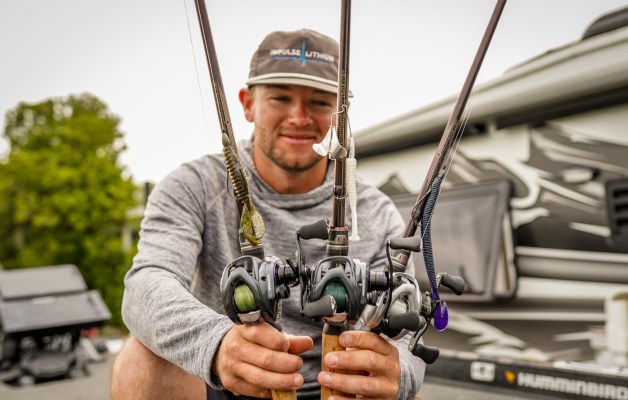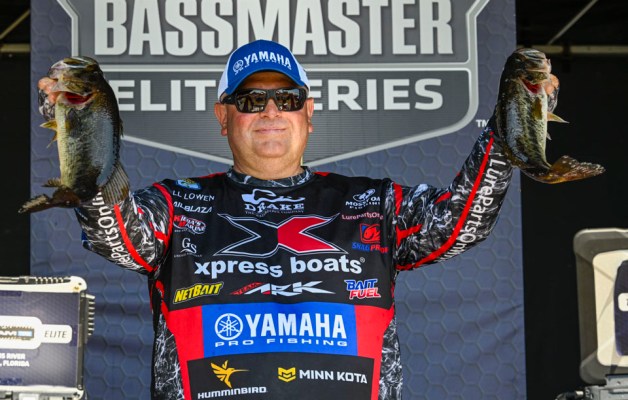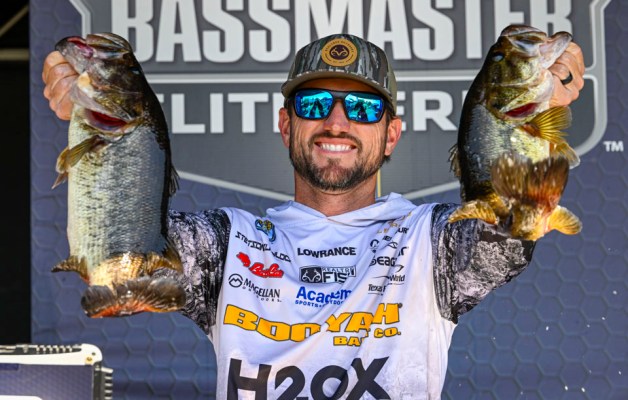
In the 1988 Tom Cruise movie “Cocktail,” we learned a simple but flawed truth: “Everything ends badly. Otherwise it wouldn’t end.”
It’s a good thing that none of the anglers in the top ten at this week’s St. Lawrence Elite derby were old enough to see that R-rated tour de force in the theaters. I suppose that Scott Martin, a couple of months shy of his thirteenth birthday, might’ve snuck into a Clewiston theater, but the only others who’d even been born at the time were Kenta Kimura, Taku Ito, Cory Johnston and Matty Wong. The first two were 6 and 2, respectively, and living in Japan. If I know anything about Johnston, then 3, he was probably too busy with his face in a trail camera to worry about popular culture. Five month old Matty Wong was likely catching a tasty wave.
Other than Martin, the remaining nine anglers average just about 33 years old. Apparently they don’t know that they’re never supposed to show surprise or lose their cool. It’s been all gas, no brakes – all season and all week.
Today the field was cut in half to 50, and they still produced 10 bags over 25 pounds and another 14 over 22.
No one wants this event to end. No one except Kyle Welcher likely wants the season to end. Every man standing refuses to go softly into this good night. Just imagine being one of the 15 pros who averaged more than 22 pounds a day and failed to make the cut to Day 4. It would’ve been unthinkable in 1988 and probably a decade ago as well.
Patrick Walters, who will turn 29 in four days, leads and needs only 19 pounds 10 ounces to hit the Century Mark, which according to soothsayer Mike Suchan will make him the first angler in BASS history to get Century Belts with both largemouths and smallmouths. He needs 22-4 to exceed Jay Przekurat’s record from last year.
His biggest problem is that he could beat the record and still not win the tournament.
Young gun – By clinching the AOY title, 30 year-old Kyle Welcher (DOB: 2/12/93) becomes the first angler born in the 1990s to attain that achievement. Until now, Brandon Palaniuk (DOB: 11/3/87) was the latest-spawned pro to capture that trophy. Palaniuk earned his first AOY title in 2017, slightly before his 30th birthday, so he was younger than Welcher is now, but not by much. He was in his seventh season on the Elites, whereas Welcher will finish his fourth tomorrow. The last time we had an AOY substantially younger than Welcher is now was Tim Horton in 2000, when he was a 27 year-old rookie. The last angler to win the title earlier in his BASS tour-level career was Scott Canterbury, who won AOY in his second Elite season, although his lengthy career at FLW means that he was hardly a true sophomore.
Measure them for belts — Five anglers remain on pace to catch 100 pounds this week: Walters, Welcher, Chris Johnston, Kyoya Fujita and Taku Ito.
Thirty will get them there – Kenta Kimura, Cory Johnston and Justin Hamner are not on pace for a Century Belt this week, but with a 30-pound bag they too would grab hardware.
Compared to last year – After Day 3 at the St. Lawrence last year, eventual winner Jay Przekurat led with 77-07 and was the only one on pace to top 100. This year three anglers are over that mark, and five are on pace for 100.
Cart before the horse – Along with Scott Canterbury and Clark Wendlandt, Welcher becomes the third AOY in the last five years who won that title before winning his first BASS event. I’ll add an asterisk to that by noting that he may earn the win tomorrow, differentiating himself from those two.
Wrecking crew – Out of the 30 limits they’ve brought to the scales, the top ten anglers have weighed in 16 bags of 25 pounds or more and 20 times as many bags of 24 pounds or more (20) than bags under 20 (1).
He grew it himself – In the history of Bassmaster facial hair, the “disheveled smallmouth mustache” Patrick Walters is sporting (hat tip to Dave Mercer for the description) ranks somewhere behind the Paul Elias Smith Brothers beard and somewhere ahead of the Chris Zaldain lip foliage.
Smallmouth differences – During Live, Brandon Palaniuk and Jeff Gustafson talked about the genetic and stylistic differences between Champlain smallmouths and St. Lawrence smallmouths. “It’s all based on their primary forage,” Palaniuk said. The former eat larger and faster-moving baitfish, so they’re built to swim and chase, lean with bigger mouths and bigger eyes. The latter, however, have adapted to eating gobies so they’re short and stocky and therefore less likely to jump multiple times.
Line class records – This week we’ve been watching anglers successfully battle 5- and 6-pound smallmouths on 6- and 7-pound test fluorocarbon. As far as we know, Kyoya Fujita may have even tamed some of them on 3-pound line. What if we translated that dynamic to other events? Think about catching 20-pound bass on 20-pound fluoro, or 65-pound somethings on 65-pound braid. It may be necessary in certain situations – even around 2 pounders a lot of times the most efficient way to fish involves tuna tackle.
First world problems – “We can’t even get in one replay before he’s hooked up again,” said a mock-disgruntled Davy Hite while trying to cover Chris Johnston.
Sorry folks, Wally World’s closed – Taku Ito reported that he could not find Smallmouth Disneyland today. He still managed 22-13 and will try to find some animatronic bronzebacks tomorrow.
Finned freaks of nature – Speaking of his tournament-best 7 pound smallmouth, Kenta Kimura reported that “When I caught that fish I thought it was just a 6.” (emphasis added). Patrick Walters culled out a 5-2 and a 5-3. We’re starting to take talk like that for granted.
Not living up to his potential – “Not good, not acceptable,” said reigning Classic champ and brown fish guru Jeff Gustafson about missing three consecutive cuts in smallmouth country.
Dogs and cats living together! Mass hysteria! – “What’s the world coming to?” Darold Gleason commenting on the sight of Bill Lowen relying on forward-facing sonar.
Money well spent – Other than perhaps Del Rio and Zapata back in the day, I’ll hazard a guess that no community has gotten a better and more long-lasting return on investment from hosting tournaments in the history of Bassmaster than the area around the St. Lawrence. If this footage and these stats don’t make you want to go there, then you’re likely not a bass angler.





